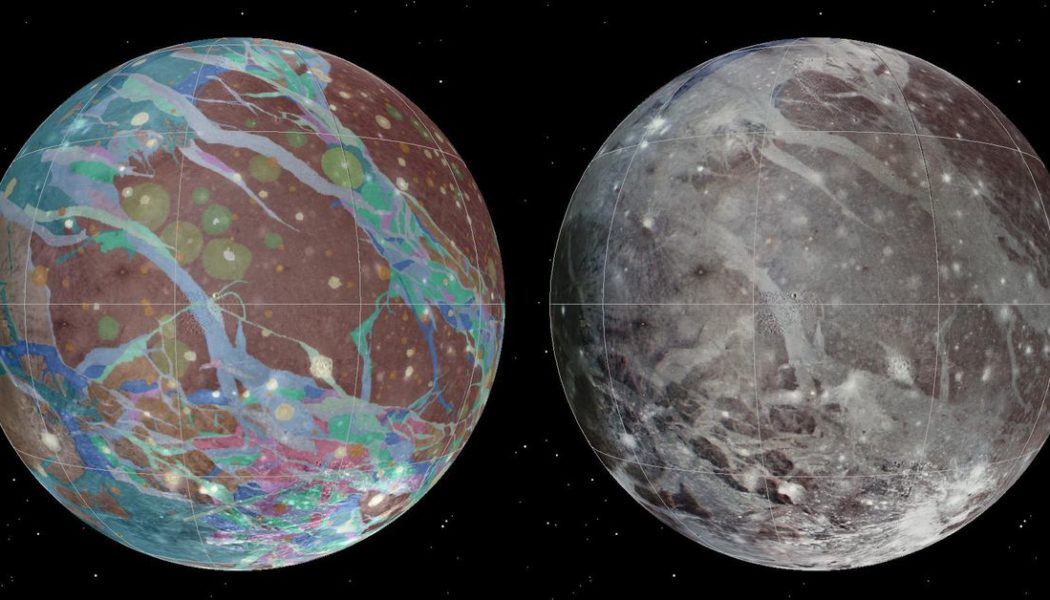
On Monday NASA’s Juno space probe, which has been orbiting Jupiter since 2016, will get a close-up look at Jupiter’s biggest moon Ganymede, the agency said in a press release. It will be the closest NASA has gotten to the largest moon in the solar system for more than 20 years— Galileo cruised by Ganymede in 2000— coming within 645 miles of its surface. The information Juno gathers will give insight into the moon’s composition and ice shell, as well as provide data for future missions to Jupiter.
“Juno carries a suite of sensitive instruments capable of seeing Ganymede in ways never before possible,” said principal investigator Scott Bolton of the Southwest Research Institute in San Antonio. “By flying so close, we will bring the exploration of Ganymede into the 21st century, both complementing future missions with our unique sensors and helping prepare for the next generation of missions to the Jovian system.”
Those missions include NASA’s Europa Clipper (launch date still TBD) and the European Space Agency’s JUpiter ICy moons Explorer [JUICE] mission, slated to launch next year and arrive at Jupiter in 2029 (and kudos to the ESA for going the extra mile on that acronym).
Ganymede is bigger than Mercury and is the only moon in the solar system with its own magnetosphere, which NASA describes as “a bubble-shaped region of charged particles” that surrounds it. The JunoCam, which has taken many of the most striking photos of Jupiter during its mission will only be able to snap about five images during the flyby, since Ganymede will appear and fade from view all within a 25-minute window. Three hours before Juno gets to its closest point near Ganymede, its science instruments will begin collecting data.
“Literally every second counts,” said Matt Johnson, Juno mission manager at NASA’s Jet Propulsion Laboratory. “On Monday, we are going to race past Ganymede at almost 12 miles per second (19 kilometers per second).” And less than 24 hours later, Juno will make its 33rd science pass of Jupiter, he added.
Juno is expected to get closest to Ganymede at about 1:35PM ET on Monday. You can track where Juno is now with NASA’s Eyes on the Solar System interactive.










